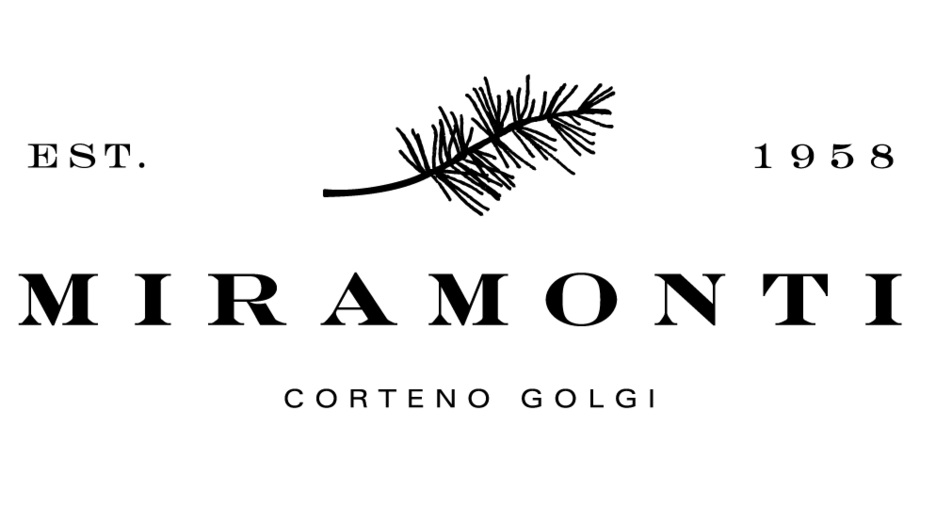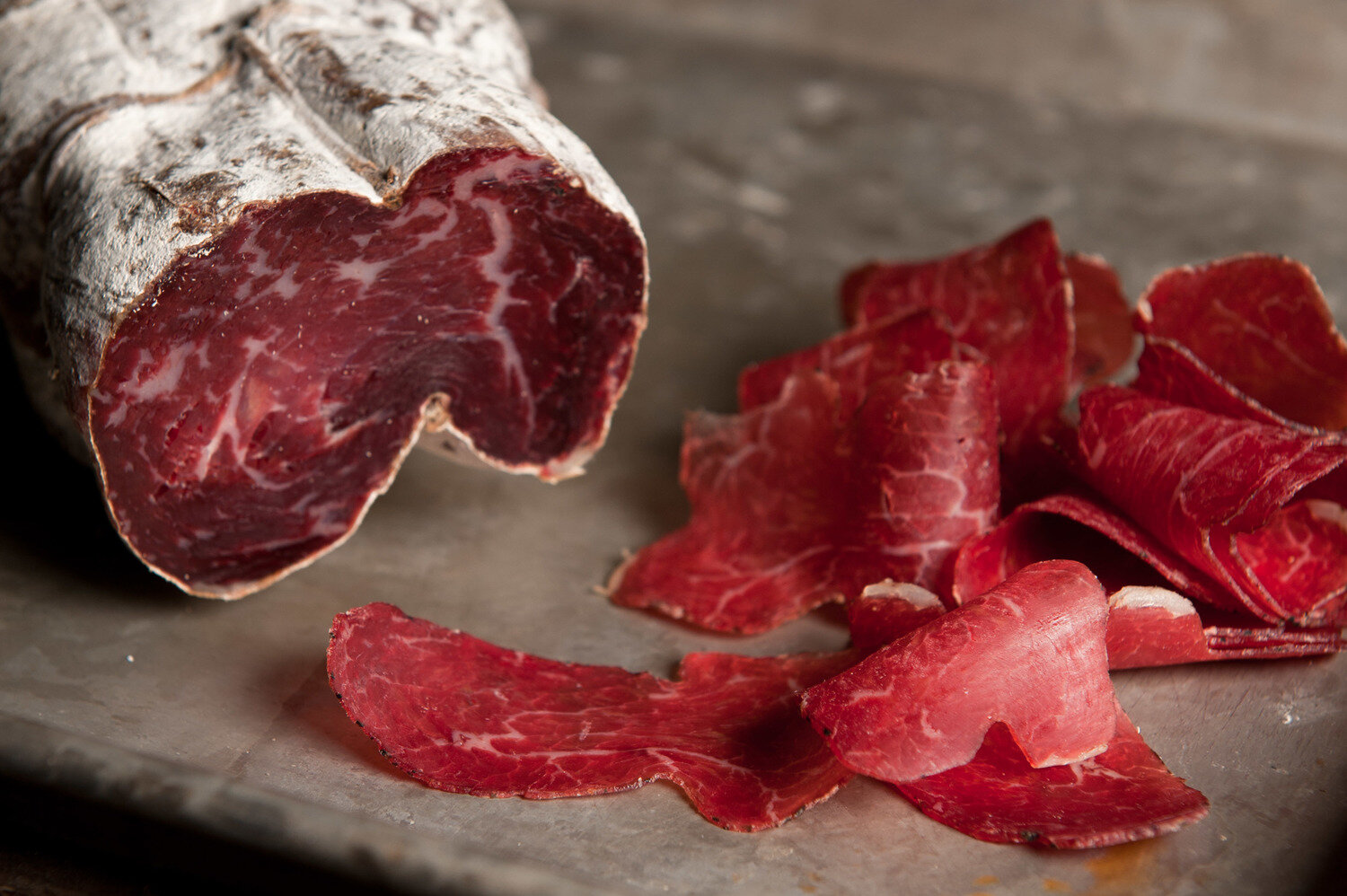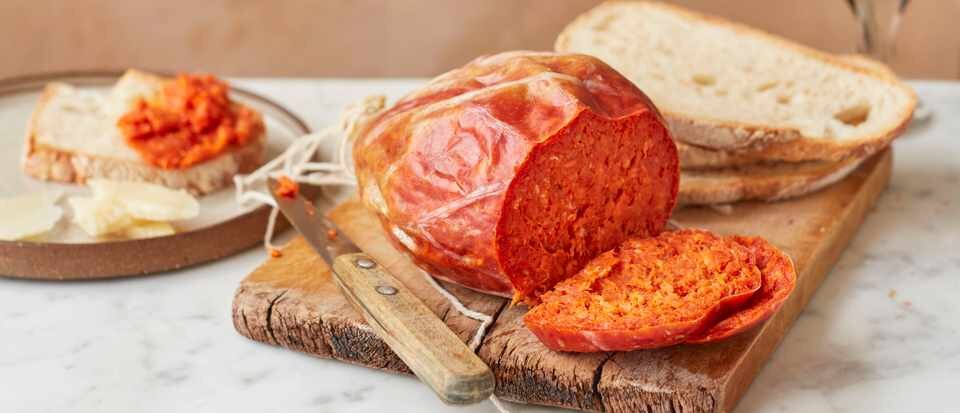Italian Salumi: 5 Varieties You Should Try
Italy is truly a dream destination for food-lovers all over the world. Everywhere in Italy, you will find local artisans that specialise in cultivating and creating high-quality ingredients. We’re sure you’ve heard of Porcini Mushrooms, Italian Cheeses and Italian Wines. But, perhaps one of the most well-known products is salumi. Salumi refers to cold cuts of pork that are popularly used as nibbles for Aperitivo or antipasti (starters) in the menus of many Italian restaurants. In our Alpine Hotel, we love salumi and we serve a delicious Mountain Platter that gives you a variety of cold cut meats to try.
In the past, meat was cured during the autumn or the early-winter; this was done to so that the Italians could keep a supply of food during the cold season. The reality is with keeping meat, is if you kept it for long periods without proper preservation, it would inevitably go bad. In today’s world, these special charcuterie pieces are served at any time of the year. What salami you choose to eat depends on your taste; there is an impressive variety of cured meats made in different regions of Italy. Below, are just a few examples:
Prosciutto Salumi.
PROSCIUTTO
Prosciutto is the most well-known raw salumi in Italy, it is often used in sandwiches, by itself, or in combination with ingredients such as melons and figs. The typical slices of prosciutto are so thin that it is almost transparent, providing a silky yet tasty experience. If you’re travelling to Italy and want to give Aperitivo a-try, you will find prosciutto on the menu. But how exactly is it made? The meat goes through a process called ‘dry-curing’. For prosciutto, the hind leg of a pig is used and is sprinkled with salt before it’s left to cool in a controlled environment. In our Alpine Restaurant, we serve the finest plate of ‘prosciutto crudo di Parma’, an 18-month dry-cured leg of ham.
Source: Ends Meat NYC
BRESAOLA
Originating from the Valtellina region of Lombardy, bresaola is another widely popular type of salumi. Instead of pork - beef is salted and dry-cured for at least 2-3 months until the meat turns into a dark reddish-purple, a colour that resembles wine. Many describe this ham to have a sweet, musky smell that pairs beautifully with olives, bread or a dry rosé. The unique flavour of the cured meat can be credited to the process at which it goes through. The leg of beef is rubbed with salt, spices, juniper berries, cinnamon and nutmeg.
Source: LEVONI
CULATELLO
Culatello is a variety of prosciutto ham that has been recognised to be one of the most ‘prized’ salumi in the market. In terms of taste and appearance, it looks significantly smaller than regular prosciutto. However, it produces a much sweeter taste. The cut of meat is closer to the bone, and therefore, culatello is widely known as the ‘king of prosciutto.’
Nduja Salumi.
NDUJA
Now for a little bit of a kick - Nduja is a spicy, pork salami originating from Calabria, Italy. The cured meat is typically made from the shoulder or belly of the pork and is rubbed with a variety of spices. Some common spices used to create the nduja’s unique flavour, such as peppers, paprika, etc. The salami has a soft texture, allowing it to be spread easily on pizzas and toasties. So, if you’re looking for cured meat that’s
PANCETTA
Pancetta is salumi made from salt-cured pork belly; it is often used to add flavour to dishes such as soups and pasta. Most Italians eat pancetta raw and thinly sliced, while some others may decide to cut it up in cubes and use it for cooking. In parts of Northern Italy, it is rolled; and in some parts of Central and Southern, the pancetta is flattened. In short, pancetta can be eaten in many different ways.
Why not stay at Albergo Miramonti? We are located within the Alps, with a Hotel Spa, relaxing Cigar Lounge and an Italian Restaurant that serves local Valtellina Cuisine.
For more articles about the Italian Alps and Northern Italy, read our blog:
26 November 2019






